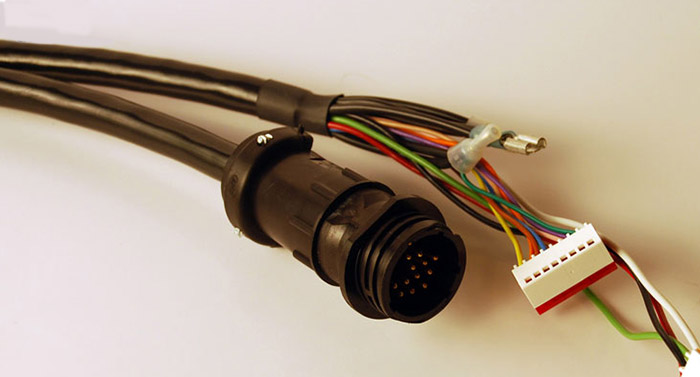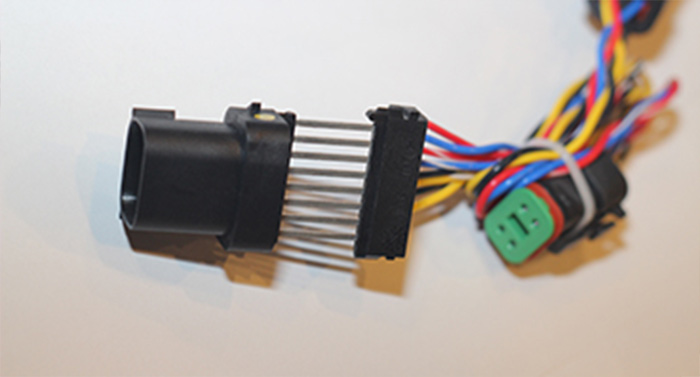Introduction to Wiring Harnesses
Wiring Harness Basics
A wire harness or cable assembly is an assembly of wires or cables that transmits signals or electrical power.
- The wire or cable is frequently bound together with wire ties, lacing, sleeves, tape conduit or a number of other options including a combination of the above.
- A harness provides advantages over loose wires and cables by offering decreased installation time and allows for standardization.
- Wires often have terminals attached which can then be assembled into keyed housings for error proofing and connection to other parts of the final assembly.
- Harness assembly is typically done manually due to the many different processes involved.
- Refer to Ever First wiring harness design guidelines for more information.
Wiring harness design is often overlooked in the product development.
- This can result in incomplete drawings and obstacles in the manufacturing process.
- Early partnership with Ever First can help guide the design by avoiding many last minute changes.
- OEM Tooling and material lead times can be very long – advanced planning is important.
Harnessing can be broken down into several areas:
- Leaded wire
- Frequently used in point to point wiring
- Typically made on automated equipment
- Low complexity
- Minimal labor
- Good quality
- Additional savings opportunities for customer with bundling the leads into a harness
Wiring Harness or Cable Assembly
- Usually includes terminals and housings along with other components
- This can be made via a mix of manual and automated operations
- Often this has a higher labor content and need for the higher quality controls developed by Ever First which includes 100% testing
- Wiring Harnesses are made up of individual wires where as Cable Assemblies are made with a multi conductor jacketed cable
Cutting/ Stripping/ Crimping
- A key aspect of a high quality harness is the terminal crimp
- Crimping is a method of attaching a terminal or contact end to an electrical conductor
- Essential to control for maintaining good electrical and mechanical characteristics
- Use of OEM components and tooling contribute to a high quality consistent connection
- Ever First goes well beyond simply checking crimp height, width and pull test by use of a full terminal verification which includes a cross section analysis of the crim


|


